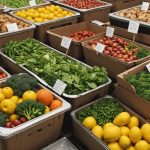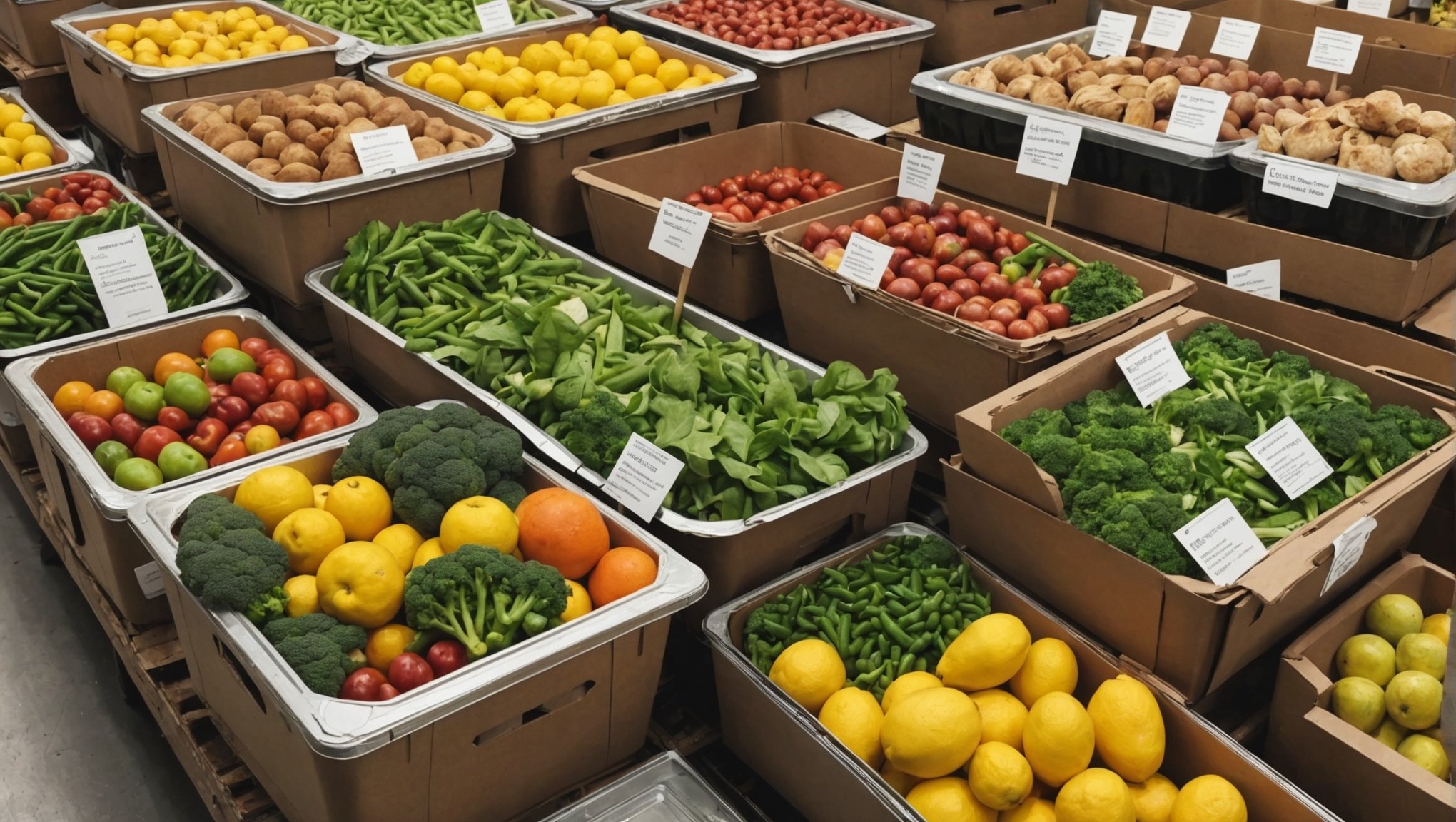Understanding Sustainable Packaging
Sustainable packaging is designed to minimise environmental impact through the use of eco-friendly materials and innovative solutions. It incorporates a variety of eco-friendly materials that not only reduce waste but also promote a healthier planet. The core idea is to use materials that are biodegradable, recyclable, or reusable, ensuring a circular economy where packaging does not end up in landfills.
Types of Sustainable Packaging Materials
Several types of sustainable packaging materials have emerged as leaders in the field. These include:
This might interest you : Top Strategies for UK Businesses to Safeguard Against Cybersecurity Threats
- Bioplastics: Made from renewable sources such as corn starch or sugarcane, offering a biodegradable alternative to conventional plastics.
- Recycled Paper and Cardboard: Using fibres from recycled paper products to significantly decrease the reliance on virgin paper.
- Mushroom Packaging: Created using agricultural waste and mycelium, it provides a compostable solution for protective packaging needs.
Innovations in Sustainable Packaging Technologies
Innovations in packaging technologies continue to advance, pushing the boundaries of what is possible. Technological developments include smart packaging, which extends the shelf life of products and reduces overall waste. Furthermore, edible packaging is gaining traction as an exciting alternative that completely removes waste by allowing consumers to eat the packaging itself.
Benefits of Sustainable Packaging for Food Producers
The shift towards sustainable packaging offers significant rewards for food producers, extending beyond mere compliance to substantial advantages. First, consider the environmental impact: transitioning to eco-friendly materials significantly reduces waste and conserves resources. By using recyclable or biodegradable packaging, companies decrease their carbon footprint and contribute to a healthier planet. This aligns with global initiatives to curb pollution and encourages other industry players to adopt similar practices.
In the same genre : Transforming Fitness: Leveraging Augmented Reality to Elevate Customer Experiences in UK Gyms
From an economic standpoint, sustainable packaging can lead to substantial cost savings. Although initial investments might be higher, the long-term savings cannot be underestimated. Efficient use of materials and the reduction in waste disposal costs ultimately boost profitability. Additionally, improving operational efficiency through streamlined packaging processes enhances productivity and cuts down on labour and time.
Equally important is the enhancement of brand image and consumer trust. In today’s market, consumers increasingly favour brands committed to sustainability. Adopting eco-friendly packaging can positively influence brand perception and foster stronger consumer loyalty. It sends a clear message that the company is proactive and responsible in its production practices. This not only meets consumer demands but sets a benchmark for industry standards. Sustainable practices, therefore, offer a holistic approach to business growth and environmental stewardship.
Case Studies: UK Food Producers Leveraging Sustainable Packaging
Exploring sustainability success stories among UK food producers reveals innovative approaches.
Company A: Innovative Packaging Solutions
Company A has become a beacon of innovation in sustainable packaging. They have integrated a multitude of eco-friendly materials in their packaging, such as biodegradable films and recycled cardboard, transforming their entire supply chain. This move not only reduced waste but led to a substantial increase in sales and customer engagement. Their commitment to sustainable packaging resonates well with environmentally conscious consumers, boosting brand loyalty.
Company B: Reducing Carbon Footprint
Company B implemented a series of eco-friendly practices aimed at reducing their overall carbon footprint. These practices range from using renewable energy sources in production to optimizing transportation routes to minimize fuel consumption. Compared to their previous operations, emissions have diminished significantly, showcasing improved performance through their environmentally conscious initiatives.
Company C: Consumer Focus and Feedback
For Company C, consumer preferences play a pivotal role in selecting packaging. They regularly survey customers to gauge perceptions of sustainability, leading to packaging that reflects consumer values. Feedback suggests a strong approval of efforts to enhance the sustainability of packaging, underscoring a positive shift in consumer perceptions and solidifying their market position.
Economic Implications of Adopting Sustainable Packaging
Adopting sustainable packaging involves weighing the economic implications, both immediate and future-facing. While initial investment costs can be significant, these are often offset by long-term savings. Companies may face higher expenses upfront due to the need for new materials and changes in manufacturing processes. However, these initial costs can lead to reduced waste, lower energy consumption, and savings on raw materials over time, enhancing overall profitability.
Financial incentives and government support play a crucial role in this economic transition. Many governments provide financial incentives such as tax breaks or grants to encourage companies to adopt sustainable practices. These incentives can significantly reduce the financial burden of initial costs, making the transition more appealing.
Furthermore, market trends show that eco-conscious consumers are increasingly driving profitability. As consumers become more aware of environmental issues, they are more likely to support companies that demonstrate a commitment to sustainable practices. This shift in consumer behaviour can lead to increased sales and brand loyalty, offering businesses a competitive edge in the market.
By understanding and leveraging these economic factors, businesses can make informed decisions about adopting sustainable packaging, balancing immediate costs with long-term profitability and aligning with current market demands.
Regulatory Considerations for Sustainable Packaging in the UK
Navigating regulations in sustainable packaging is crucial for businesses in the UK. Current packaging laws emphasize reducing environmental impact and promoting recyclability. These regulations compel businesses to adopt materials that lessen waste and are easier to recycle. Ensuring compliance involves understanding the materials that meet these legal requirements.
Producers face various compliance challenges. Strategies to overcome these obstacles include comprehensive audits to evaluate current packaging against legal standards, investing in technologies that reduce packaging material usage, and collaborating with suppliers who offer sustainable alternatives. Furthermore, businesses need to stay informed, as non-compliance can result in significant fines and damage to their reputation.
Looking ahead, future regulatory trends suggest stricter guidelines. These may include enhanced reporting requirements on packaging lifecycle impacts and more rigorous audits. Keeping pace with these changes is vital for companies aiming to maintain compliance and uphold sustainable practices.
As sustainability becomes central in business strategies, understanding these regulations is not just about avoiding penalties. It’s about aligning with consumer expectations and contributing to environmental conservation efforts. Businesses that anticipate trends and proactively adjust will likely lead in this evolving landscape.
Consumer Preferences and Market Trends
Understanding consumer preferences is crucial in today’s market, especially as the demand for sustainability continues to rise. With growing environmental awareness, many consumers now actively seek products featuring sustainable packaging. This shift is especially prevalent in the food industry, where eco-friendly packaging options not only appeal to consumers but also enhance brand loyalty.
Social media plays a significant role in shaping consumer choices. Platforms like Instagram and TikTok amplify discussions about sustainability, often swaying purchasing decisions. Brands promoting their eco-friendly initiatives tend to resonate well with environmentally-conscious consumers, demonstrating transparency in their sustainable practices.
Interestingly, a recent analysis reveals that market trends are steering towards more sustainable solutions due to increased consumer awareness. The food industry, continuously influenced by these trends, is prioritising the integration of sustainable packaging materials into its product lines. This approach not only meets consumer demand but also positions companies as leaders in corporate responsibility.
Consumers are increasingly demanding authentic environmental commitments from brands. This trend not only affects individual companies but also impacts the industry as a whole, encouraging innovation and sustainable practices. As a result, companies that adapt to these evolving consumer preferences are likely to enjoy a competitive advantage in the marketplace.
Challenges and Solutions in Implementing Sustainable Packaging
Switching to sustainable packaging poses several challenges for food producers. They often face adoption barriers such as higher costs, limited availability of materials, and adapting existing production lines. The initial investment can be daunting, dissuading many producers from making the change.
However, embracing sustainable packaging offers long-term benefits. The initial challenges can be mitigated through strategic solutions. Successful adopters often share best practices that others can emulate. These include conducting a comprehensive cost analysis to evaluate long-term savings, prioritising materials that reduce carbon footprints, and collaborating with suppliers to develop innovative packaging solutions.
Additionally, tapping into available resources and support networks can simplify this transition. Various industry associations and government bodies offer guidance, incentives, and grants for implementing sustainable packaging strategies. Engaging with these resources allows companies to access technical expertise and find cost-effective options.
By understanding the key challenges and learning from successful transitions, food producers can adopt sustainable packaging, ultimately benefiting both their businesses and the environment. This shift not only addresses consumer demand for eco-friendly products but also paves the way for companies to become leaders in sustainability. Embracing these solutions leads to a more positive environmental impact.
I’m ready to assist with your request. Could you please provide me with the “Section Outline,” “Keyword Cluster,” “Question Cluster,” and any additional relevant information or instructions that will guide the writing of the section?











